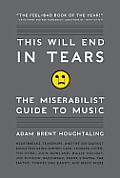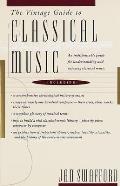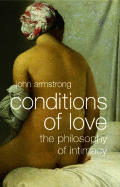
When I started thinking about the form that my book —
This Will End In Tears: The Miserabilist Guide to Music — would take, I knew I wanted two things: it should be interesting for both deep-cut obsessives as well as less rabid music fans, and it should have multiple layers providing for more than just one entryway for readers.
Regarding the first point: I wanted music fans like me — brimming with dates, names, and other assorted trivia — to be able to quickly skim through my book and see things they maybe haven't seen or thought of before. So I included a brief history of melancholy and essays on the cultural significance of the color blue and about how the physiology of tears ties into their pop significance. I also peppered my many playlists in the book with appropriate, but nearly lost, songs that even I had never heard before researching the book, such as Private Charles Bowens and the Gentlemen from Tigerland's "Christmas in Vietnam," which I found on one of my epic dives into the darker corners of YouTube. I also decided to make the artist profiles in the book run in alphabetical order as opposed to chronological or by genre because I wanted less obsessive music fans to hopefully be drawn to new artists — ideally a fan of the Smiths might discover the Sound or maybe even take their first listen of Sibelius.
 When it came to thinking about the layout of the book, I wanted it to take some twists and turns and give both casual and intensive readers a way to approach the book. The former can dive into the book anywhere they want — look up their favorite bands, read the essays, or start with my top 100 saddest songs list — while the latter may read all 400 pages front to back.
When it came to thinking about the layout of the book, I wanted it to take some twists and turns and give both casual and intensive readers a way to approach the book. The former can dive into the book anywhere they want — look up their favorite bands, read the essays, or start with my top 100 saddest songs list — while the latter may read all 400 pages front to back.
The book most inspirational to me in thinking about the nature of the interior design — even if my book didn't wind up with the same dense layout — was Jan Swafford's The Vintage Classical Guide to Music. Dense with research while remaining light and informative it has a complex interior design with pages intermittently split horizontally so that essays that run concurrently across multiple pages and profiles split between a composer's biography and his or her most important works. I've always loved Swafford's book and highly recommend it as a go-to classical primer.
 My essays, which covered everything from neuroscience and physiology to the history and cultural readings of disintegration and the apocalypse, were inspired by a number of writers. John Armstrong's Conditions of Love: The Philosophy of Intimacy uses bright and manageable essays to dig into the changing, evolving nature of a topic that's been under a microscope since long before there were microscopes. Alain de Botton's works such as The Consolations of Philosophy and The Architecture of Happiness helped me to form fresh and interesting new perspectives on the confluence of music and sadness.
My essays, which covered everything from neuroscience and physiology to the history and cultural readings of disintegration and the apocalypse, were inspired by a number of writers. John Armstrong's Conditions of Love: The Philosophy of Intimacy uses bright and manageable essays to dig into the changing, evolving nature of a topic that's been under a microscope since long before there were microscopes. Alain de Botton's works such as The Consolations of Philosophy and The Architecture of Happiness helped me to form fresh and interesting new perspectives on the confluence of music and sadness.
Speaking of sadness, when it came to research, Jennifer Radden's The Nature of Melancholy: From Aristotle to Kristeva became indispensable. Her anthology of depression — featuring essays from philosophers, doctors, psychologists, and scholars — contained so much information (including Radden's own thoughtful insights) that I couldn't help but return to it again and again. I also spent a fair amount of time with Anthony Storr's Music and the Mind and This Is Your Brain On Music: The Science of a Human Obsession by Daniel J. Levitin.
There were certainly many, many other books and articles that I consulted along the way — histories and biographies, anthologies and articles — but the above helped more than any others. Though there was one other notable one that helped get me through.
There's an interview with James Baldwin from the Spring 1984 issue of the Paris Review (it can be found in Volume II of the collected Paris Review Interviews) that includes a quote from the author that went a long way toward quelling my hyper-critical inner demons and fly-away fears as I came closer to the end of writing: "You never get the book you wanted, you settle for the book you get." He followed up that thought by saying, "I've always felt that when a book ended there was something I didn't see, and usually when I remark the discovery it's too late to do anything about it."  At times my approach to the book — adding science of history to the focus on sad music — seemed to be impossibly large and I kept in the back of my mind the lifelong road Robert Burton traveled writing, re-writing, and adding and subtracting from his brick-sized The Anatomy of Melancholy.
At times my approach to the book — adding science of history to the focus on sad music — seemed to be impossibly large and I kept in the back of my mind the lifelong road Robert Burton traveled writing, re-writing, and adding and subtracting from his brick-sized The Anatomy of Melancholy.
As a first time author (although maybe I'll always be this way), I found it incredibly difficult to part with my work. My agent and editor were beseeching me to let go of the manuscript, and I resisted. Baldwin's brief quote helped me to see that more accomplished writers than I have struggled with similar concerns and that I was not so different. And had I not found a way to tie it off, I'd likely still be writing. Talk about melancholy.